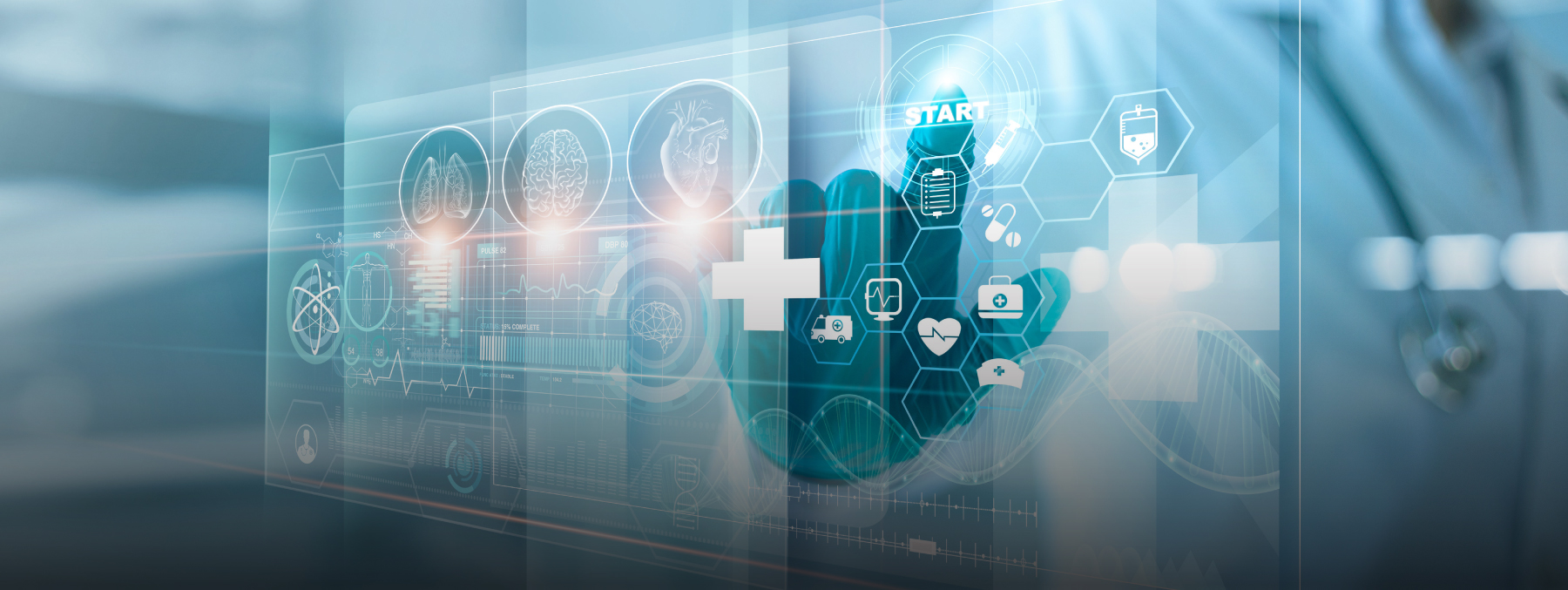
Today and tomorrow of medical technologies
Medical technologies, which involve digitally transforming the entire process from preventive healthcare practices to diagnosis, monitoring and treatment, are shaping the current state and future of the healthcare landscape. They also ensure that medical procedures are completed safely, quickly and transparently while improving the patient experience by enhancing the efficiency of the work processes in healthcare institutions.
Medical technologies (medtech), which focus on producing medical equipment and applications used in diagnosis, monitoring, treatment and patient care processes with a patient-centric approach, include medical devices, diagnostic systems, and digital health applications. The devices, applications and software used in all processes from preventive healthcare procedures to post-treatment can be categorized under medical technologies. Therefore, medtech includes both everyday items such as surgical masks and gloves, and also technology products like AI-assisted surgical applications. Medical technologies offer significant development opportunities. For example, among the applications filed with the European Patent Office in 2021, medtech products ranked second with more than 15 thousand patent applications.
Benefits of medical technologies
- Medical technologies that aim for healthcare services to be provided more safely, effectively and efficiently enable patients to access information about their treatments quickly. These technologies also accelerate the appointment booking processes.
- As another benefit, these technologies facilitate the work processes by enabling healthcare professionals to access all information about patients easily, monitor patients concurrently, and respond to treatment needs quickly.
- The advancements in medical technologies enable patients with limited mobility to receive regular treatment through remote monitoring while ensuring that the whole disease process is monitored in cases like pandemics.
- These technologies also enable preventive and regular maintenance of the devices used in and out of hospital settings by following the maintenance requirements of medical devices and prevent health risks by detecting anomalies in the equipment.
Use cases of medical technologies
- As mentioned above, remote patient monitoring is one of the primary areas where medical technologies are used. According to some studies, by 2025, more than 25% of the US population is expected to use the medical devices that enable the HCPs to continuously measure the blood sugar, blood pressure, and oxygen levels of patients. Furthermore, surveys indicate that using remote health technologies improves the patient satisfaction levels by 90%. Meanwhile, many medtech startups engage in R&D to integrate such devices with the smart devices of patients.
- Enabling remote collaborations for medical processes is another field driven by medical technologies. Several factors such as minimizing the financial hurdles that specialists have to overcome to travel to other countries and even continents to provide treatment and perform surgeries, eliminating time constraints, and allowing intervention in emergencies inevitably gave rise to remote collaborations, especially during the pandemic, accelerating advancements in these technologies.
- Medical robots have been another important outcome of the advancements in medical technologies. The global medical robotics market, which includes the implementation of robots for many tasks from preventing human errors that can pose serious risks during surgical procedures and disinfecting operating rooms to facilitating the patients’ post-op recovery processes and moving the needed materials between hospital units, is estimated to generate $44.45 billion by 2030.
The future of medical technologies
VCs have focused on medtech as a major investment area over the past decade. The total amount of $914 million injected into the global industry by the investors in 2013 rose to $38.2 billion in 2021. However, there are signs that the flow of investment in medical technologies could be slowing down in 2022 due to a number of factors such as global political developments and macroeconomic whirlwinds.
Cyber security of medical devices comes to the forefront among the major trends observed in the global medtech market. Significant efforts go into eliminating security gaps that digitalization may create in the healthcare sector, where patient confidentiality is a primary concern of ethics and legal compliance. According to a recent survey, medical device companies point to the need for multiple tools and technologies to handle various product security tasks, with 45% of respondents seeing the resulting fragmented processes as their top challenge.
As another rising trend, the Internet of Things (IoT) is also transforming the medtech sector. The internet of medical things (IoMT) is driving digital transformation in the industry with wearable health technologies, remote patient monitoring systems, hospital information management systems, and other applications. The global internet of medical things market is expected to reach a $158 billion valuation in 2022.
Sources
insiderintelligence.com
globenewswire.com
verdict.co.uk
cybellum.com





